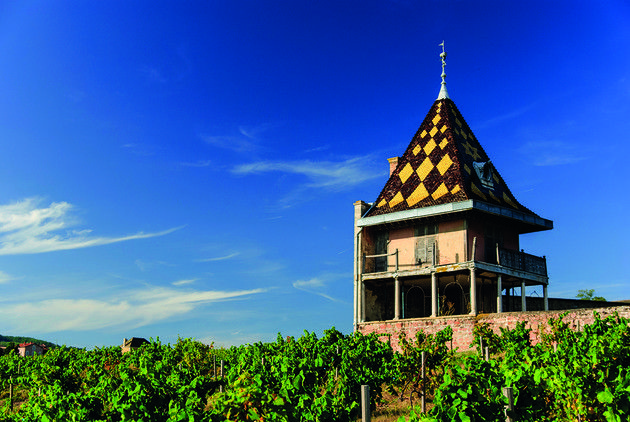
2018 Burgundy: excellent reds and solid whites
Panos Kakaviatos reports from Hospices de Beaune on the ins and outs of the 2018 vintage.
As the Hospices de Beaune wine auction enjoyed a record-breaking sale at this year’s auction (18 November), tasters assessing barrel samples from the 60-hectare estate praised the reds more than the whites.
Record beating sunshine levels in August and temperatures higher than 28°C in July for 22 days out of 31 (2° higher than average) made some tasters think that the wines – red and white – would be too heavy and lack elegance.
But like many tasters, Paris-based wine educator Eric Riewer said that the risk of an “over-the-top” style was not the case with the wines of the Hospices. “Many reds displayed balance and even freshness along with good red fruit delineation”, he said.
Czech wine educator Michael Setka was “surprised by the fresh fruitiness of the red wines, and most of the cuvees displayed fine balance and velvety tannins, even if the vintage was quite warm”, he said. “Some whites seemed to lack enough freshness and acidity, but they were not flabby,” he added.
What prevented a 2003 scenario (a very hot year) were cooler nights, said Jasper Morris MW, wine consultant for Christie’s auction house, which organized the sale. And in spite of 2018 being one of the three earliest vintages in the last 10 years, the reds showed more juice in the grapes because of heavy spring rainfall that allowed the water table to “come up through the roofs”, Morris added.
The 500mm of rainfall between October 2017 and March 2018 – the highest ever in the last 25 years – “kept more freshness in the wines than we had expected,” Morris added.
Picking dates proved essential to retaining freshness, said Ludivine Griveau, vineyard-manager and winemaker at the 60-hectare Hospices de Beaune domain. “For the reds, it was a risk to harvest too late,” she said, “although it was tempting”. For the Chardonnays ripening was “by fits and starts”, she said. Tasting some grapes at Meursault on 22 August, for example, she thought it would ripen slowly, but by the 28th of August, the grapes reached 13 degrees of natural alcohol, “so we picked at just the right time without any need to acidify,” she stressed.
Yields were generous, at about 50 hectolitres per hectare for the whites, and 42 for the reds, she said, with alcohol levels not as high as what some tasters expected, averaging around 13.5%.
“It is more a red fruit and not black fruit style, meaning that there is ripeness but not over-ripeness,” Morris said. “Extractions were on the lighter side”, he added, “certainly softer than in 2015.”
Outside the Hospices, Domaine de la Romanee-Conti co-owner Aubert de Villaine, described 2018 as “two-thirds 2015 and one-third 2003”. [2015 produced an exceptional vintage in much of Burgundy, 2003 riper, richer, but good wines.]
As for the whites, Philippe Prost of the negociant Bouchard Père & Fils offered a private tasting on the of the auction of several samples of the famous Chevalier Montrachet appellation, of which Bouchard owns 2.5 hectares, to illustrate that cooler terroirs fared better for whites in 2018.
For example, the upper terrace of the Chevalier Montrachet – just underneath Saint Aubin, he stressed – had higher than average acidities at about 4.2 grams of acidity per litre. “That is still quite high when you consider that in 2014 it was closer to 4.8 grams,” he explained.






